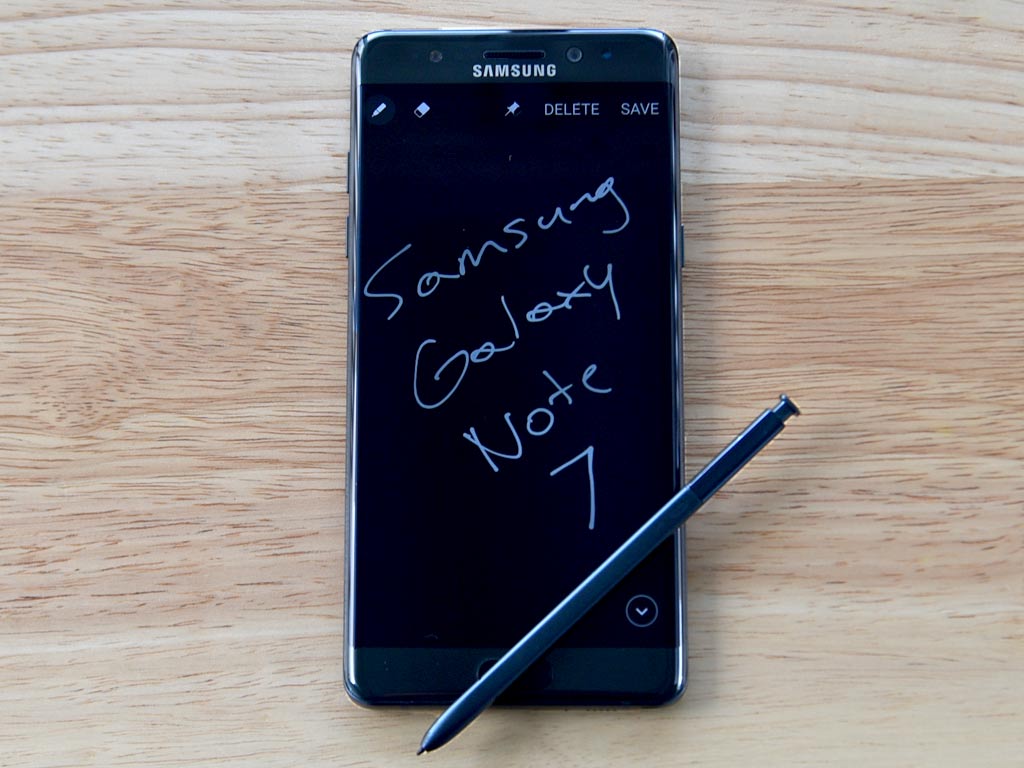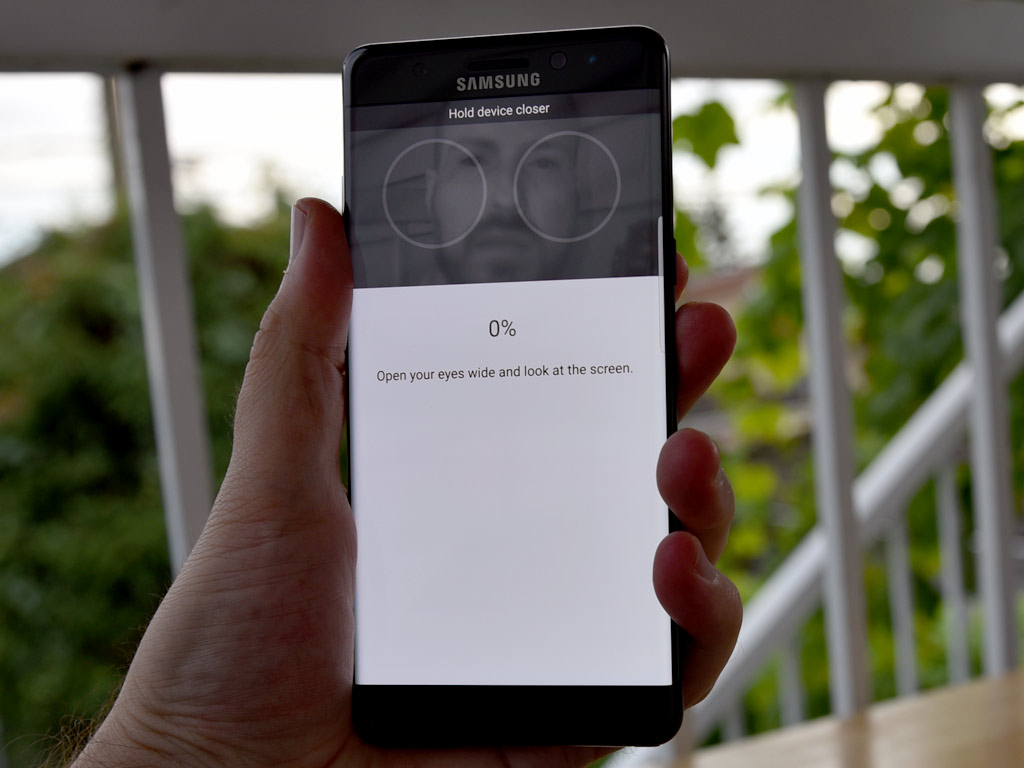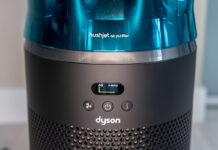
| Samsung Galaxy Note7
Display: 5.7-inch 2560 x 1440 Super AMOLED edged display with 518 pixels per inch OS: Android 6.0.1 Marshmallow (upgradeable to 7.0 Nougat) Processor: 2.15GHz + 1.6GHz Snapdragon 820 64-bit quad-core processor Memory: 4GB RAM, 64GB (microSD card slot expandable up to 2TB) Camera: 12-megapixel standard rear camera with optical image stabilization, 5-megapixel front-facing Video: Up to 4K Ultra HD video recording Battery: 3500mAh (non-removable) Connections: LTE, Wi-Fi, MIMO, Bluetooth 4.2, A-GPS, NFC, Fast Charging, Wireless Charging, USB-C Extras: IP68 water and dust-proofing Dimensions: 6.04 x 2.91 x 0.31 inches Weight: 169 grams Comes in black and silver |
When it comes to big phones, or “phablets” as some still term them, Samsung’s Note line was the catalyst four years ago. The Galaxy Note7 is a culmination in two strides that borrows from other Samsung devices, yet manages to look different enough to stand out. The result is one of the best all-around handsets to come to market this year.
Last year, the Note 5 proved to be an excellent device that fell far more in line with the Galaxy S design. Skipping the number six, Samsung has synergized its two flagships in almost every major way that now includes the numerical title.
Those who held out for the Note7, for whatever reason, be it from loyalty to the Note line, or something else altogether, are not going to be disappointed with this phone.
Design
Much of what has stayed the same is the material design. Put this next to a Galaxy S7 or S7 Edge and the overall look and feel isn’t very different. Some of the nuances are, however, and they can be impactful when it comes to both feel and usability.
While the curved edged display will be more obvious to your eyes, the curved edges on the body in the rear will be more obvious to your hands. The curved display on the front is also a standout because the edge itself isn’t as pronounced as on the Galaxy S7 Edge. In other words, it doesn’t dip as drastically, and that makes it easier to pick up and hold. Despite being a device with a 5.7-inch display, the bezels around it are not big, shrinking the overall form factor to a point where the screen completely overtakes everything else. Slipping the Note7 in a pocket or small purse is not difficult for that reason, though its fragility is something to consider.
Being all glass, the Note7 is as much a fingerprint magnet as any Samsung device before it. Smudges are common almost immediately, and though Gorilla Glass 5 is tough, the curved display does make it a little more delicate, where even a short drop on a really hard surface could have terrible consequences. If you have any angst about that, a case is a must.
Beyond that, there are few differences from the Galaxy S7 duo. Screen resolution is the same. The cameras are the same. The software is the same. The RAM is the same. Wireless charging is the same. The IP68 water-resistance rating (up to 1.5 metres underwater for up to 30 minutes) is the same. The nano SIM and microSD card slot are also the same, including memory expansion.
The processor is a Snapdragon 820 instead of the Exynos used in the S7 devices (but the same Snapdragon 820 was used for those devices in the U.S.) For the most part, performance is pretty even between them, though more advanced users who care about benchmarks may notice slight variations. Internal storage is 64GB, whereas it was 32GB for the others.
The addition of USB-C at the bottom heralds the beginning of the end of Samsung’s use for microUSB, so from here on in, you can bet that all future models will be using this soon-to-be industry standard.

Iris scanner and S Pen
These are two of the major hardware elements that make the Note7 unique, even within the Samsung family. The Iris scanner might come off as yet another gimmicky feature, but it can change how you interact with device. Setting it up as a way to get past the lock screen is arguably quicker than even the fingerprint sensor, though that may be a matter up for debate. By simply looking at the display, the lock screen disappears almost instantly.
The catch is that it works best when holding the phone, whereas the fingerprint sensor can do that, and work just as well when laying flat on a table. Not only that, but there’s a warning about using screen protectors in that layering something over the sensor may cause it to not work properly. My guess is that protectors specific to the Note7 will have an opening to give the scanner an unfettered view, but it is something to be cognizant of. And I should also mention that glasses and contacts may throw it off, so best to try it out first and see how you like it.
The S Pen always gets more responsive with each iteration of the Note, though I’m still hard-pressed to see it come close to matching the feeling of pen to paper. Even so, I can appreciate when it feels easier to write on the screen. The biggest difference I noted (pun intended) is in how brushes and colour appear. In previous models, drawing one colour over another literally painted over it. Now, they blend together for a more natural mixture.
You might look at this as pointless if you’re not into doodling or illustrating, but it’s one of those things that made me want to try more with it. I could experiment with trying to draw things because different coloured lines weren’t harshly overlapping, they meshed like they’re supposed to do.
Another cool feature is Smart Select, particulary for creating animated GIFs from video clips. This worked like a charm on YouTube and other video sites I tried online (Dailymotion being another), but not on Netflix, CraveTV or Shomi.
Then there’s Translate, a new app for the pen that, when chosen, can translate a word by pointing the pen at it. It uses Google Translate to do this, so the languages it supports are available to choose from here, too. It’s neat and could be useful while travelling, though Google’s limitations in translating apply just the same.

Performance and software
The Note7 launched with Android 6.0.1 Marshmallow, though 7.0 Nougat is looming, so an upgrade is in the offing. The look and feel of the software doesn’t deviate much from the Galaxy devices, which is hardly surprising only months after Samsung launched those to market. This naturally includes the edge display interface, adding a navigation element that hasn’t been seen in the Note since the Note Edge last year.
Outside of that, the differences are more related to the S Pen, noted above. Samsung’s ability to scale back its footprint enough to let Android breathe more is welcome, though I do wish the company would backpedal further. Still, improvements to the settings app, and a wise decision to relegate its own Galaxy apps to a different app store are good ways to foster more confidence.
Overall performance didn’t show much of a difference to me compared to a Galaxy S7 Edge. Fluid and highly consistent, I was able to do just about everything on the Note7 and not worry about it. Demanding games played well, as did video and creativity apps. If power and performance are your speed, I doubt you will be disappointed.
Camera
I’ve already covered the basic details of the camera with my review of the Galaxy S7, so I won’t repeat myself here. What I will note is the camera’s consistency and superb photo composition, as well as the merits of shooting in Pro mode.
Samsung has traditionally filled its camera software with a slew of features and modes in the past, but I tend to focus most on Auto and Pro modes. The wider f/1.7 aperture allows a great deal of light to pass through the lens to the sensor, helping users capture excellent shots at night and in low-light. Pro mode only makes it even more impressive because the manual controls — shutter speed, ISO, white balance, exposure and manual focus can be toggled with sliders.
By virtue of the fact the Note7 uses the same camera as the Galaxy S7 and S7 Edge, it is one of the best smartphone cameras by default. I would strongly recommend learning the Pro mode to capture even better composition, especially in tougher conditions. Go to the camera settings and turn on the slider at the bottom to save RAW versions of photos in case you want to go deeper in editing afterward.
Battery life
The Note7 should have no problem getting through a full day on one charge, though as always, usage habits will impact the actual numbers. For that reason, I can’t give an estimate, other than to say that going above 24 hours should be a regular occurrence with moderate use. The phone does support Fast Charging, except the cable in the box is USB 2.0, not USB 3.1. If you care about charging and data transfer speeds that much, opting for the faster cable may make a big difference. Wireless charging is also a neat way to charge the device, and some auto manufacturers are offering a charging pad in newer vehicles, too.
Final Thoughts
The Note7 is one of the best phones I’ve tested this year, but I have to acknowledge that it’s not entirely original because of how much it emulates the Galaxy S7 and S7 Edge. Samsung wants synergy between them, and that makes the choice between them a little easier for you. If you want a slightly larger screen (only 0.2-inches larger) and want the functionality of the S Pen and iris scanner, then look no further.
If you don’t, yet still want the same performance, camera and design, including the edged display, then the Galaxy S7 Edge will suit you just fine.
The Samsung Galaxy Note7 is available now in black or silver.













